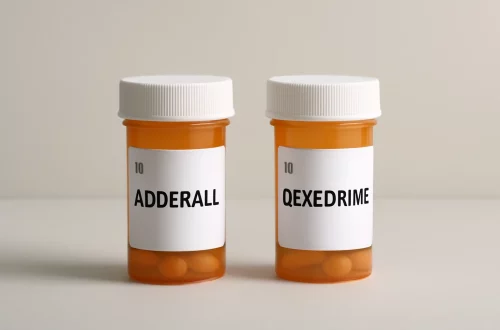
Can M&Ms Go Bad? Understanding Shelf Life and Safety
M&Ms have become a staple in the world of confectionery, beloved for their colorful shells and sugary centers. These candy-coated chocolates have captured the hearts of many, often found in various settings, from casual movie nights to festive celebrations. However, as with any food product, questions about their longevity and safety arise. With their vibrant allure, the idea of M&Ms going bad might seem unlikely, but understanding their shelf life is important for both enjoyment and safety.
Many factors influence a product’s freshness, including ingredients, storage conditions, and packaging. While M&Ms may seem impervious to spoilage, they are not immune to the passage of time or improper storage. The combination of sugar, chocolate, and a hard candy shell does provide a certain level of protection, but it’s essential to delve deeper into what it means for M&Ms to “go bad.”
This exploration doesn’t just cover the basics of spoilage; it also emphasizes the importance of recognizing signs of deterioration and makes it clear how to ensure these delightful treats remain enjoyable for as long as possible. Understanding the nuances of shelf life can enhance your experience and help you make informed decisions about your favorite candies.
Understanding the Shelf Life of M&Ms
M&Ms, like many candies, come with a shelf life that is dictated by various factors, including production methods and ingredient quality. Generally speaking, M&Ms can last a long time if stored properly. The official shelf life is often printed on the packaging, typically ranging from 12 months to 24 months after the production date. However, this timeframe can be influenced by several factors.
One of the primary ingredients in M&Ms is chocolate, which has a reasonably long shelf life due to its low moisture content. The hard candy shell also plays a crucial role in protecting the chocolate from air and moisture, which are the main culprits of spoilage. However, while M&Ms may not spoil in the traditional sense, they can lose their texture, flavor, and overall quality over time.
It’s important to note that the shelf life may vary based on the specific type of M&M. For example, peanut M&Ms and almond M&Ms may have different storage properties compared to the classic chocolate variety. The presence of nuts can introduce oils that may go rancid, affecting taste and quality.
To maximize the shelf life of M&Ms, storage conditions are critical. Keeping them in a cool, dry place away from direct sunlight is ideal. Exposure to heat can cause the chocolate to melt, while humidity can lead to a sticky texture or even promote mold growth if moisture is absorbed. By taking these precautions, you can enjoy your M&Ms well beyond their printed expiration date, as long as they are still safe to consume.
Signs That M&Ms May Have Gone Bad
While M&Ms are known for their durability, there are still signs to watch for that indicate they may no longer be suitable for consumption. It’s crucial to recognize these signs to avoid any unpleasant surprises when reaching for a handful of your favorite candy.
One of the most apparent signs of M&Ms going bad is a change in texture. If the candies become excessively sticky or clump together, it may be a sign that they’ve absorbed moisture. This can lead to an undesirable eating experience, as the once-crisp candy shell loses its appealing crunch.
Another indicator is a change in color. If you notice that the candy shells have faded or developed an uneven color, this could indicate exposure to heat or light, which can degrade the candy’s quality. Taste is also a critical factor; if M&Ms start to taste bland or off, it’s advisable to discard them.
When it comes to packaging, check for any signs of damage or compromise. If the bag is torn or has holes, the candies may have been exposed to air and moisture, leading to quality deterioration. Always inspect the packaging before indulging in your treats.
It’s also worth noting that while M&Ms might not harbor harmful bacteria in the same way that perishable foods do, consuming expired candy can still lead to an upset stomach or discomfort. Therefore, if you’re in doubt about the quality of your M&Ms, it’s better to err on the side of caution and choose a fresh pack.
Best Practices for Storing M&Ms
Proper storage is essential for maintaining the quality and longevity of M&Ms. By following best practices, you can ensure that your favorite candies retain their flavor and texture for as long as possible.
First and foremost, choose the right storage container. If you have opened a bag of M&Ms, consider transferring them to an airtight container. This will help protect them from air and moisture, both of which can adversely affect their quality. Glass jars or plastic containers with tight-fitting lids work well for this purpose.
Temperature is another critical factor to consider. M&Ms should be stored in a cool, dry place, ideally between 65°F and 70°F (18°C to 21°C). Avoid placing them near heat sources, such as ovens or microwaves, as excess heat can cause the chocolate to melt and the candy shells to become misshapen.
Avoid exposing M&Ms to sunlight, which can lead to fading colors and a loss of flavor. A pantry or cupboard is usually an ideal location for candy storage. If you live in a particularly warm climate, you might consider refrigerating M&Ms to extend their shelf life. However, be aware that refrigeration can affect texture, making the candy shells less crisp.
Finally, always check the expiration date on the packaging. While M&Ms can often be safe to eat beyond this date, it’s important to assess their quality and freshness before consumption. By following these guidelines, you can enjoy your M&Ms at their best for an extended period.
Can You Freeze M&Ms?
Freezing M&Ms is a topic that often comes up among candy enthusiasts, and the answer is yes, you can freeze M&Ms, but there are some considerations to keep in mind. Freezing can be a useful method for extending the shelf life of candies, especially if you have a large quantity that you cannot consume in a short period.
When freezing M&Ms, it’s essential to use an airtight container or a resealable freezer bag to prevent freezer burn and moisture buildup. If you opt for a bag, consider removing as much air as possible before sealing it. This helps protect the candies from absorbing odors from other items in the freezer.
One thing to note is that freezing can alter the texture of M&Ms upon thawing. While the candy shell may remain intact, the chocolate inside can become firmer, resulting in a different mouthfeel compared to fresh M&Ms. However, many people find this texture change acceptable and enjoy the chilled sensation of frozen M&Ms.
When you’re ready to enjoy your frozen M&Ms, simply transfer them to the refrigerator for a few hours to allow them to thaw gradually. Avoid leaving them at room temperature for too long, as this could lead to condensation and moisture buildup, which can negatively impact their quality.
In summary, freezing M&Ms can be a viable option for preserving their freshness, but it’s essential to store them correctly and be mindful of potential texture changes.
As a final note, this article is intended for informational purposes only and should not be considered medical advice. If you have specific health concerns or dietary restrictions, please consult a healthcare professional before making any changes to your diet or consuming food products.




